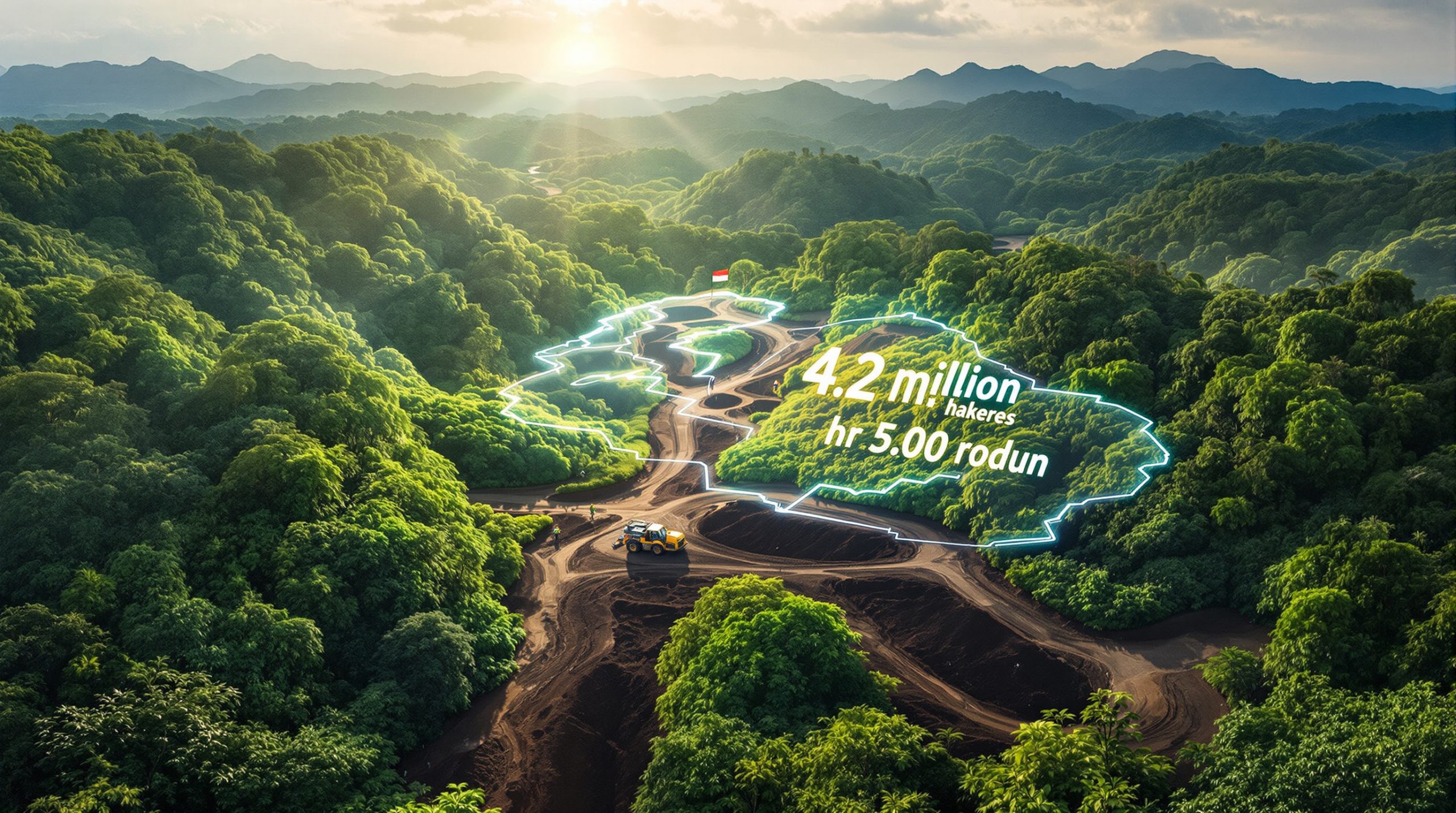What is Ontario's New Mining Legislation Proposal?
Ontario Premier Doug Ford has announced new legislation branded as 'One Project, One Process' aimed at cutting approval times for new mining projects by 50%. The initiative focuses primarily on strategically important mining projects, beginning with the Ring of Fire and critical minerals development. This bold move represents one of the most significant regulatory reforms in Ontario's mining sector in decades, designed to address longstanding competitive disadvantages while meeting growing global demand for critical mineral export restrictions.
Key Elements of the Proposed Legislation
The centerpiece of Ford's legislation is the commitment to reduce government review timelines by half, bringing the current 15-year approval process down to approximately 7.5 years. This ambitious target would be achieved through streamlining environmental assessments, permitting processes, and regulatory reviews under a single coordinated framework.
The legislation creates a harmonized consultation process with Indigenous communities, replacing the current fragmented approach where multiple government agencies conduct separate consultations. This aims to reduce duplication while ensuring meaningful engagement with First Nations whose traditional territories overlap with proposed mining developments.
Critical minerals – including lithium, cobalt, nickel, and rare earth elements essential for electric vehicle batteries and renewable energy technologies – receive priority status under the new framework. The Ring of Fire region, containing an estimated $60 billion in mineral potential, is specifically targeted as the first beneficiary of these streamlined processes.
Perhaps most controversially, the legislation introduces tighter restrictions on foreign entities, with explicit limitations on Chinese state-owned enterprises investing in Ontario's critical minerals sector. This aligns with broader national security concerns about foreign control of strategic resources.
Current Challenges in Ontario's Mining Approval Process
The current 15-year timeline to establish a new mine in Ontario represents a significant competitive disadvantage. For context, jurisdictions like Western Australia have reduced their timelines to 5-7 years, while Nevada averages just 4 years from discovery to production.
Mining companies face a labyrinth of regulatory processes, with approvals required from up to 14 different provincial ministries alongside federal requirements. This regulatory fragmentation creates uncertainty, delays, and substantially increases pre-production costs, with some projects experiencing carrying costs exceeding $10 million annually while awaiting approvals.
Despite Ontario's rich mineral endowment, particularly in critical minerals, investment capital has increasingly flowed to jurisdictions with more predictable regulatory frameworks. Industry data shows that mining investment strategies in Ontario declined 14.5% between 2017 and 2022, while increasing in competing jurisdictions with faster approval processes.
The Ring of Fire, discovered in 2007 and containing world-class chromite and nickel deposits, remains undeveloped after nearly two decades – a stark example of how regulatory hurdles have stymied economic development in the province's north.
Why is Ontario Accelerating Mining Project Approvals Now?
Economic Pressures from the United States
Ontario's policy shift comes amid escalating trade tensions with its largest trading partner. Premier Ford explicitly referenced President Trump "taking direct aim at our economy" as a motivating factor, referring to tariff threats that could significantly impact Ontario's manufacturing sector.
The recently implemented 10% tariff on Canadian aluminum and potential expansion to other sectors has created urgency for Ontario to strengthen its economic resilience. With 77% of Ontario's exports destined for the U.S. market, the province faces unprecedented pressure to enhance its competitiveness.
Perhaps more concerning are what Ford characterized as "annexation threats" – rhetoric from some U.S. politicians suggesting closer economic integration or policies that would effectively draw Canadian resources into the American supply chain on preferential terms. These geopolitical pressures have accelerated the timeline for regulatory reform.
The U.S. Inflation Reduction Act's domestic content requirements for critical minerals used in electric vehicles presents both a challenge and opportunity for Ontario. By streamlining approvals, the province aims to position itself as a reliable supplier within increasingly regionalized North American supply chains.
Critical Minerals Strategic Importance
Global demand for critical minerals is projected to increase by 400-600% by 2040, according to the International Energy Agency. This unprecedented growth is driven primarily by the transition to electric vehicles and renewable energy, with each EV requiring six times the mineral inputs of conventional vehicles.
Ontario possesses world-class deposits of key battery metals, including the largest known chromite resource in North America at the Ring of Fire, significant nickel reserves at Sudbury, and emerging lithium projects across the province. Geological surveys indicate Ontario could supply up to 25% of North America's cobalt needs and 20% of its nickel requirements for battery production.
The province's mining reforms align with its $12 billion investment in attracting EV manufacturing, including recent deals with Volkswagen and Stellantis. Creating an integrated supply chain from mine to manufacturing represents a strategic economic opportunity worth an estimated $35 billion in GDP contribution over the next decade.
Northern Indigenous communities, facing unemployment rates as high as 70% in some areas, stand to benefit significantly from expedited mining development. Industry estimates suggest each new mine creates 300-500 direct jobs and up to 2,500 indirect employment opportunities.
How Will the Legislation Impact Indigenous Consultation?
Coordinated Consultation Framework
The new legislation introduces a "one-window" approach to Indigenous consultation, consolidating what was previously a fragmented process involving multiple government departments. This coordinated framework aims to reduce the consultation burden on Indigenous communities while ensuring they engage meaningfully on projects affecting their territories.
Under the proposed system, a dedicated Indigenous consultation office would coordinate all engagement activities, establishing clear timelines and protocols. This represents a significant shift from the current approach, where communities often face simultaneous consultation requests from different government entities on the same project.
The legislation maintains the constitutional duty to consult but introduces standardized processes for identifying affected communities, determining appropriate consultation depth, and documenting outcomes. Industry observers note this could provide greater certainty for both project proponents and Indigenous governments.
For the Ring of Fire specifically, the framework would formalize consultation with the nine Matawa First Nations whose traditional territories encompass the mineral deposits, addressing a longstanding source of delay in the region's development.
Implications for Indigenous Communities
Indigenous leaders have expressed mixed reactions to the streamlined process. Some welcome the potential for accelerated economic benefits, including resource revenue sharing agreements that could generate millions annually for communities with limited economic opportunities.
Chief Bruce Achneepineskum of Marten Falls First Nation, which has been working on a community access road connected to the Ring of Fire, noted: "We support efficient processes but must ensure they respect our rights and territories. The timeline cannot trump meaningful involvement in decisions."
The legislation creates opportunities for enhanced Indigenous participation in the mining economy through mandated benefit agreements, employment targets, and business development opportunities. However, concerns remain about whether the accelerated timeline will allow for adequate assessment of environmental and cultural impacts.
Some First Nations have developed innovative approaches to ensuring meaningful participation despite faster timelines. For example, the Webequie First Nation has established an independent environmental monitoring authority that will oversee mining activities on their traditional lands regardless of government approval processes.
What Are the Investment Implications for Ontario's Mining Sector?
Potential Economic Benefits
The mining industry estimates that cutting approval times in half could unlock $25 billion in mining investments currently stalled in the regulatory pipeline. Projects that were previously uneconomic due to extended carrying costs during lengthy approvals may now become viable.
Mining exploration expenditures, which have lagged behind other jurisdictions, are expected to increase by 30-40% following implementation of the streamlined process. Industry analysts note that junior mining companies, which conduct most early-stage exploration but often lack capital for extended approval processes, would benefit most significantly.
Reducing the timeline from 15 to 7.5 years substantially improves project economics. Financial models indicate that for a typical mid-sized mining operation, this could increase internal rates of return by 15-20 percentage points, making Ontario projects more competitive for global capital allocation.
The provincial treasury stands to gain an estimated $4.5 billion in additional tax revenue over the next decade through accelerated development. Northern municipalities, which have faced economic challenges as traditional industries declined, could see property tax bases expand by 15-25% with new mining developments.
Foreign Investment Considerations
The legislation's restrictions on Chinese involvement in critical mineral projects represent a significant shift in Ontario's investment strategy. Previously, Chinese firms like Sinomine Resource Group had acquired stakes in lithium projects across the province, including the PAK deposit near Red Lake.
New guidelines will require enhanced security reviews for investments from non-allied nations, particularly state-owned enterprises. This aligns with the federal Investment Canada Act amendments but adds provincial oversight specifically for critical minerals.
Investment capital is expected to shift toward domestic sources and allied nations like Australia, Japan, South Korea, and European Union member states. Ontario has already begun courting these alternative investors, with a recent trade mission generating $2.5 billion in mining stocks guide investment commitments from South Korean battery manufacturers.
Industry analysts note that while restricting Chinese investment may reduce short-term capital availability, it strengthens Ontario's position as a secure supplier for Western supply chains. This "friend-shoring" approach is increasingly valued by manufacturers concerned about supply chain resilience.
How Does Ontario's Plan Compare to Other Mining Jurisdictions?
Competitive Positioning
Ontario's current 15-year timeline places it at a significant disadvantage compared to leading mining jurisdictions worldwide. Australia's Western Australia state has reduced approvals to 5-7 years through coordinated assessment processes, while Nevada achieves 4-5 year timelines through its streamlined permitting framework.
Even within Canada, Ontario lags behind Quebec, which averages 10-12 years for mine development. Quebec's "Plan Nord" initiative has successfully attracted substantial mining investment through coordinated infrastructure development and regulatory efficiency measures.
The proposed 50% reduction would significantly improve Ontario's competitive position, potentially elevating it from the bottom quartile to mid-range among global mining jurisdictions for regulatory efficiency. This could help reverse the trend of declining share of global mining investment, which has fallen from 25% in 2002 to under 12% today.
The legislation's focus on critical minerals aligns with similar initiatives in Australia's Critical Minerals Strategy and the European Critical Raw Materials Act, both of which prioritize approval processes for strategically important resources.
Regulatory Balance
Ontario's approach aims to maintain environmental standards while reducing bureaucratic inefficiencies. Unlike some jurisdictions that have weakened environmental protections to speed approvals, the legislation focuses on process coordination rather than substantive regulatory changes.
Environmental assessments will remain comprehensive but will be conducted concurrently rather than sequentially, potentially saving years without compromising thoroughness. Similarly, water permits, endangered species authorizations, and other environmental approvals would be coordinated through a single timeline.
The legislation takes inspiration from successful models elsewhere, particularly Australia's "lead agency" approach where a single government entity coordinates all approvals. However, it adds innovative elements like the Indigenous consultation framework that address Ontario-specific challenges.
Balancing expedited approvals with community concerns remains challenging. The legislation includes transparency measures requiring public reporting on approval timelines and outcomes, creating accountability for both government and project proponents.
What Are the Next Steps for Ontario's Mining Legislation?
Legislative Process
The proposal must pass through the Provincial Legislative Assembly, where it will undergo committee review and potential amendments before final passage. With Premier Ford's Progressive Conservative party holding a majority, passage is likely but not guaranteed given the complex stakeholder interests involved.
Implementation would follow a phased approach, beginning with pilot projects in the Ring of Fire and expanding to other critical mineral developments within 12-18 months. Full implementation across all mining projects would occur within two years of royal assent.
Regulatory framework development will require extensive consultation with industry, Indigenous groups, and environmental organizations to establish detailed guidelines and processes. The Ministry of Mines has established a dedicated implementation task force with representatives from key stakeholder groups.
Projects already in the approval pipeline would have the option to transition to the new process or continue under existing frameworks, with transition protocols being developed to ensure fairness and consistency.
Implementation Challenges
Developing truly coordinated approval processes across multiple government departments presents significant administrative challenges. Previous attempts at regulatory streamlining have sometimes created additional layers rather than simplification, a pitfall the current legislation seeks to avoid through clear accountability measures.
Establishing effective Indigenous consultation frameworks requires addressing diverse governance structures and capacity challenges among First Nations. Some communities lack the technical capacity to review complex mining proposals quickly, necessitating additional support mechanisms.
Creating clear guidelines for foreign investment restrictions while maintaining investment attractiveness requires careful balance. Too restrictive an approach could deter legitimate international investment, while too permissive an interpretation could undermine national security objectives.
Measuring success against the 50% time reduction target will require robust baseline data and ongoing monitoring. The legislation establishes reporting requirements and performance metrics to track progress, with annual public reports on approval timelines.
FAQ: Ontario's Critical Mining Project Approvals
What is the current timeline for mining project approvals in Ontario?
According to Premier Doug Ford, it currently takes approximately 15 years to open a new mine in Ontario, creating significant delays and missed economic opportunities compared to competing jurisdictions where approvals take 5-7 years on average.
Which mining projects will be prioritized under the new legislation?
The new 'One Project, One Process' legislation will initially focus on strategically important mining projects, starting with the Ring of Fire chromite and nickel deposits and extending to critical minerals essential for electric vehicle batteries, including lithium, cobalt, graphite, and rare earth elements.
How will Indigenous consultation be handled under the streamlined process?
The legislation establishes a coordinated consultation process with Indigenous groups on whose lands mining projects will be developed. This includes standardized protocols, dedicated resources for community capacity building, and requirements for benefit agreements while maintaining the constitutional duty to consult.
What restrictions are being placed on foreign entities?
Ontario is implementing enhanced screening for investments from non-allied nations, particularly China, in critical mining projects. The restrictions align with national security concerns and aim to protect strategic resources while encouraging investment from domestic sources and allied nations.
How does this initiative relate to broader Canadian resource development strategies?
This initiative complements Prime Minister Mark Carney's stated goal to expedite permits and position Canada as an energy and resources superpower. The federal Critical Minerals Strategy and Ontario's approach create a coordinated framework to establish secure North American supply chains for materials essential to the clean energy transition and align with future mining industry predictions while ensuring proper mineral resources governance.
Seeking the Next Major Mining Discovery?
Stay ahead of the market and receive instant alerts on significant ASX mineral discoveries with Discovery Alert's proprietary Discovery IQ model, transforming complex mineral data into actionable investment insights. Understand why major mineral discoveries can lead to significant returns by exploring Discovery Alert's dedicated discoveries page and begin your 30-day free trial today.




